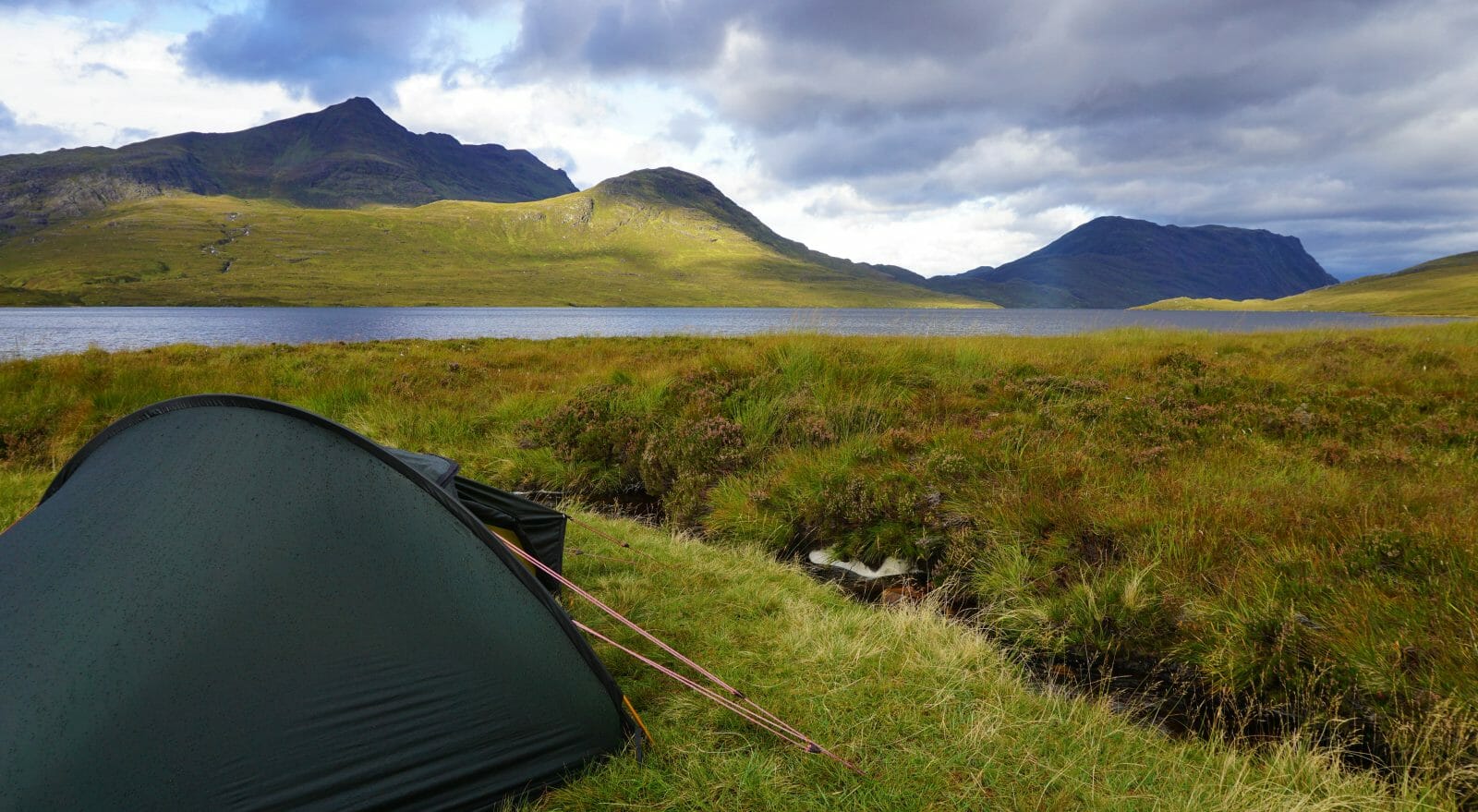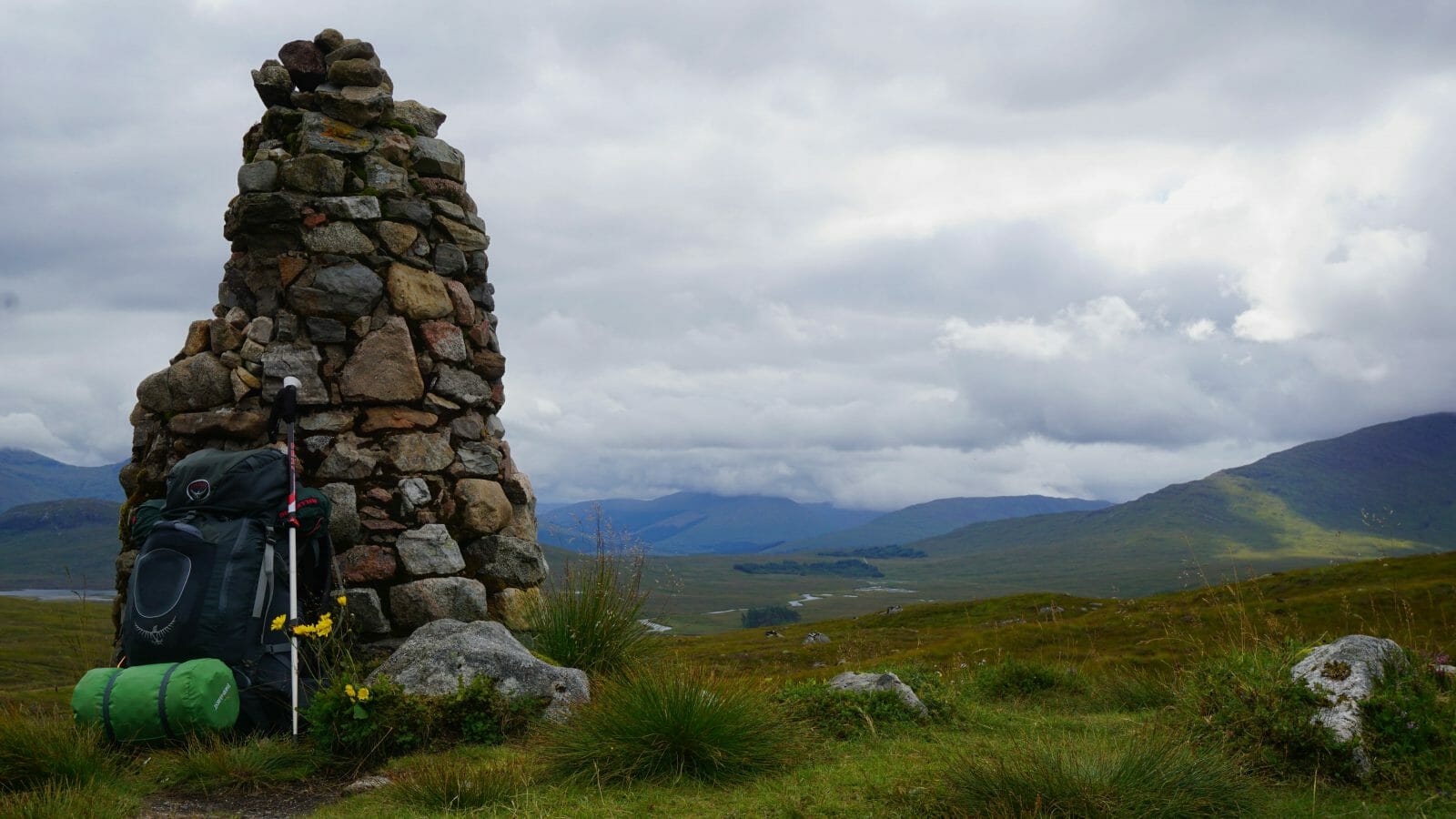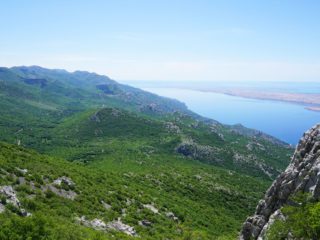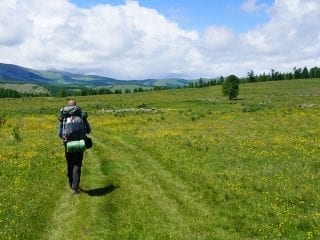The Cape Wrath Trail proved to be three weeks of some of the best hiking I’ve done in my life. Now I’m going to let you know how to take on Scotland’s most challenging long-distance trail yourself!
First off, Scotland’s Cape Wrath Trail can’t really be called a trail in the traditional sense. Firstly because it is more of an unofficial collection of smaller trails rather than a marked and advertised trail like the West Highland Way, for example. Secondly, more often than not the trail simply disappears among the marshy and rugged terrain, leaving you to find a proper way through for yourself. Does this sound good to you? Great, let’s keep going.
Hikers planning to take on the Cape Wrath Trail without a guide should be experienced hikers, able to fend for themselves in terms of personal safety, food and supplies and navigation. Prepare to carry a tent and sleeping gear. While this trail has its share of bothies and other forms of accommodation along the way, they are not numerous enough to provide shelter every night. But more on this later. Let’s get you started!
Looking for free shelter on the Cape Wrath Trail? Check out my Cape Wrath Trail bothy guide!
Jump straight to section:
- Preparation for the Cape Wrath Trail:
– Planning
– Logistics (parcels, transport)
– Food and drink
– Training - The Gear
- The Route
- The Cost
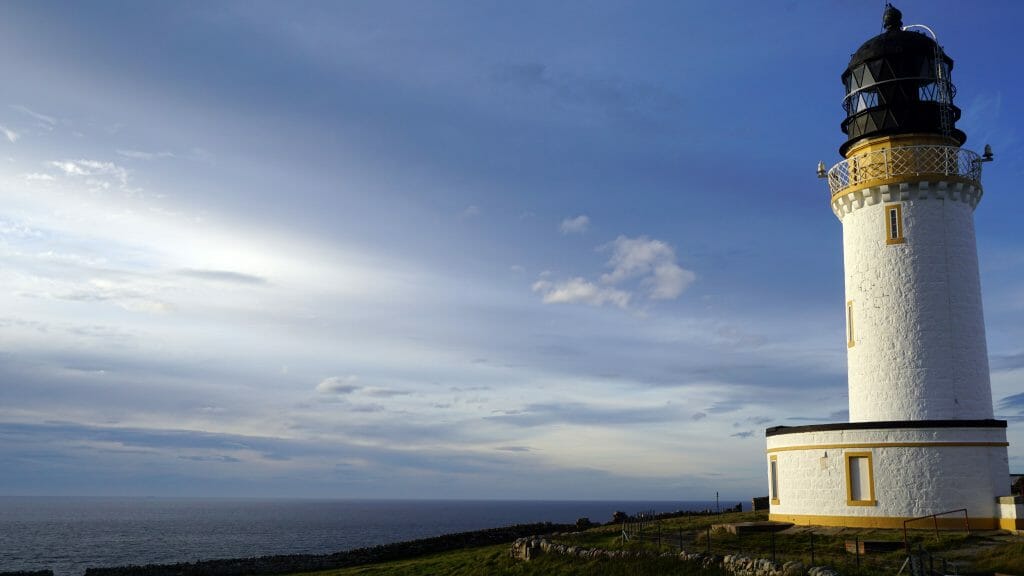
Preparing for the Cape Wrath Trail
This is probably the most important part of this Cape Wrath Trail guide. A good preparation will help you tackle most of the issues you’ll be facing along the Cape Wrath Trail, allowing you to focus on the awesome views! Just don’t forget to check the ground in front of your feet every now and then…
Planning
This probably doesn’t sound too exciting, but it still is a vital part of the journey. Before you strap on that backpack and get going, you first need to know what you’re getting into, what you’ll be bringing along, how much food you’ll need, what you’re planning on eating and how long you’re planning on being on the trail.
Let’s start with the trail itself. The Cape Wrath Trail is known as Scotland’s most challenging long-distance trail. This has little to do with its duration or elevation levels. No, this particular trail is challenging because it will take you across some of the most wet, marshy, pathless, wild and generally difficult terrain the northwestern highlands have to offer. So plan your gear accordingly.
To make things even more interesting, there is a notable lack of facilities along the way. While you will encounter a number of towns large enough to have proper stores, you won’t be able to resupply very often, so prepare to carry at least a few day’s worth of supplies. I’ll explain this further under ‘Logistics’ below.
Now lets talk food. You’ll want to bring lightweight meals, enough to sustain you on a daily basis but also something that will provide you with enough nutrients and energy to make it through those three weeks. I’ll go into more detail in the next chapter.
Lastly, you’ll need to plan your route. As I said before, the Cape Wrath Trail is mostly a collection of trails that lead northward to Cape Wrath and as such there is not a single definitive route you can take. So be prepared to do some research on the different routes available, and bring a map and compass! I’ll go into more detail in the chapter appropriately called ‘The Route’.
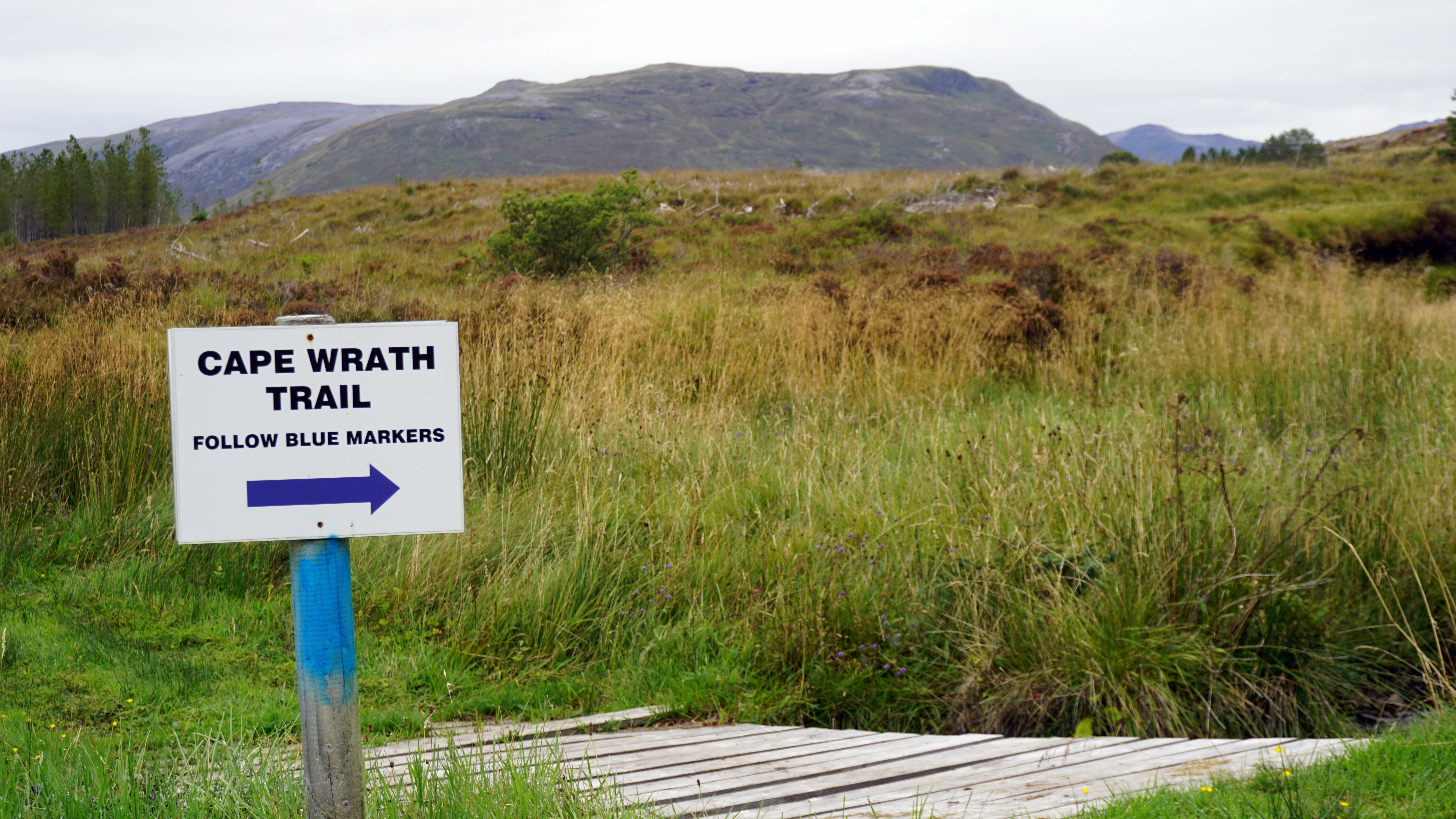
Logistics
As stated above, you’ll need to carry around a week’s worth of food for most of the time, as good resupply options often are several days apart. Towns are few and far between. One solution to this logistical problem is to send ahead parcels with food and supplies to locations along your route. I sent supply parcels to Fort William, Shiel Bridge and Ullapool with a request to hold the parcel until a certain date. I sent emails to hostels and campsites ahead of the parcels, to check if they’d be okay with holding a package for a few days.
I cannot recommend sending parcels ‘poste restante’ (to hold) to post offices, as Britain’s Royal Mail officially only allows for envelopes to be held, not packages. Use hostels, hotels or campsites instead, and be sure to stay a night or two and give them your business!
It is also possible to simply buy food supplies along the trail as you go, but be prepared to make a little detour every now and then as you’ll be dependent on visiting towns a lot more. This also means you often won’t be able to pick and choose your supplies, as not every store you’ll encounter will have lightweight meal options, for example.
Another important note is to know your ‘exit points’ in advance. Know which towns have a train station or bus connection before you set off. If for whatever reason you decide you can’t go on anymore, at least you’ll know where to go to get back to civilisation!
Training
Which brings us to another important part of your preparation: stamina. There are many different ways to train yourself for an undertaking like the Cape Wrath Trail, so I won’t cover all of them in this guide. Just remember to train your core, lower back and legs most of all. Toughen up your knees, especially the ligaments surrounding the joints.
A few tips? Get a backpack, stuff it with heavy items and start walking uphill two or three days a week. Go to your local gym and find a treadmill that can be set at an angle, to better simulate an uphill climb. Do squats, a lot of them. Add weight to your squats after a while!
I will mention this again: if you are not physically prepared and/or have no previous experience with (solo) long distance hiking, you should not be walking the Cape Wrath trail alone! Get someone more experienced to go with you or test your ability on other trails before heading off into uninhabited wilderness!
Food and water
Along with the demands of the trail itself, your food supplies will be your main concern along the Cape Wrath Trail. You’ll need something to eat for breakfast, lunch and dinner. You might also want a snack or two every day, to help keep up your energy in between meals. And as I stated before, you’ll have to be able to carry it all with you.
In any strenuous activity like hiking or other endurance sports it is important to get your strength back up at the end of a long day of depleting your body’s energy reserves. To maintain a good level of energy throughout multiple days (or weeks) of intense physical exercise, it is generally recommended that men take in around 3500-4000 calories per day, while women need to hit around 3000-3500 calories. Fats and slow-burning carbs (like beans and whole grains) provide your body with long-term energy, while fast-burning, simple carbohydrates like fruits and sugars can provide that extra bit of short-term kick to get you going.

Want to know what I did? I brought my own Breakfast Porridge Mix to start the day with, ‘hardtack’ (army ration biscuits) with peanut butter for lunch and dehydrated instant meals for dinner. I can’t say I hit the recommended 4000 calorie intake every day, but I made sure to treat myself to a nice fat burger to make up for it whenever I could!
Drinking water should never really be a problem in the Scottish highlands. As long as you draw water from fresh, fast-flowing sources well upstream of areas with livestock and/or wildlife you can drink it without filtering.
The Gear

Gear List
As it cannot be omitted from any Cape Wrath Trail guide, here’s a list of must-have gear on this trail:
I will list only what I consider to be the essentials here; I’ll leave it up to you how much extra gear you want to bring.
- Sturdy, waterproof hiking boots. I use high, B/C category boots because they keep my feet dry when crossing smaller streams and give good support when carrying a large backpack. Lighter options are also possible, with varying degrees of waterproofing and/or support. Just don’t underestimate the marshyness of the CWT!
- Good, sturdy backpack. I recommend taking one with a capacity of at least 65 litres. The fewer items you bring, the smaller your pack can be, of course. Make sure to leave enough room for food supplies.
- Lightweight tent. While bothies can provide a comfortable relief from the elements, there are too few of them along the CWT to provide you with shelter every night. A tent (or bivvy bag) is therefore absolutely necessary.
- Season-appropriate sleeping gear. A sleeping bag and whatever item you prefer to sleep on. Just make sure to prepare for the season’s nighttime temperatures!
- Season-appropriate clothing. Light and fast-drying in summer, nice and warm in winter!
- Cooking gear and fuel. Unless you plan on eating cold rations for three weeks, bring something to heat up your food or make tea with!
- Water reservoir or water bottle. Either get a lightweight water reservoir for your backpack, or a large drinking bottle of at least one litre (33 oz). Filtration usually isn’t necessary in the highlands. I nevertheless always bring a lightweight water filter for those rare occasions I can’t trust the water quality.
- Map, compass and navigational skills. Bring these along even if you’re bringing a GPS device. Its batteries could run dry or it might stop working for any other reason.
- Medkit and basic first-aid skills. You’ll be far removed from outside help for most of the time, so a certain degree of self-reliance is recommended! Make sure you bring something to send out emergency signals with as well, just in case.
- Midge net and midge repellant (May-September). Trust me.
- Swiss army knife or multitool. Don’t leave home without it.
- A camera. In a country as beautiful as Scotland, I consider this an essential bit of equipment.
The Route
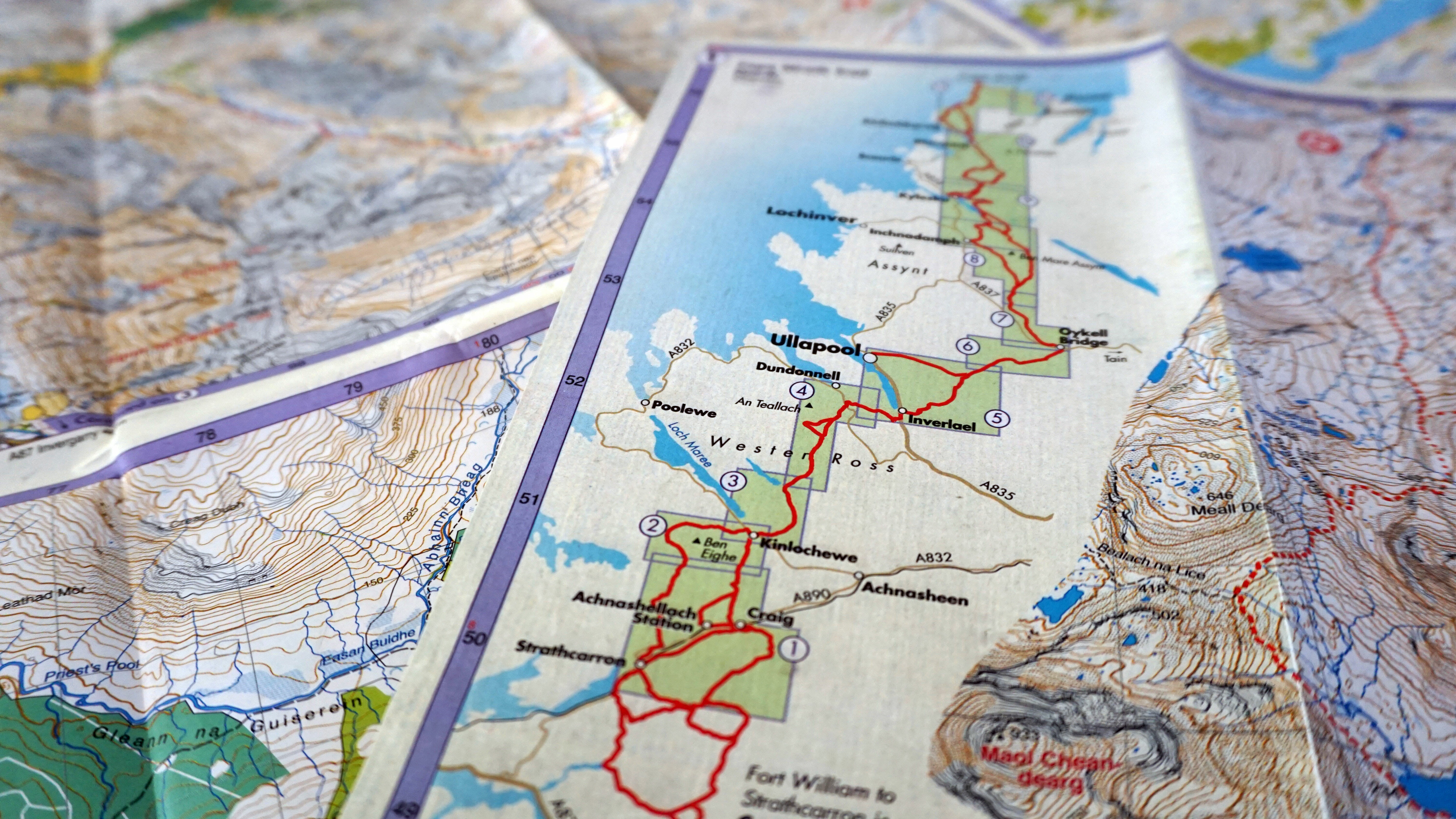
As I stated before, the Cape Wrath Trail is more of a collection of smaller trails than one single route that is properly advertised and signposted, and so there are many variations that nevertheless all constitute the same trail.
Knoydart or Great Glen?
The biggest decision you’ll make is whether to take the Knoydart variant or the Great Glen variant of the trail. The Great Glen route is slightly quicker to rejoin the rest of the trail near Shiel Bridge, but the Knoydart variant is generally considered to be the most beautiful if not the most challenging choice.
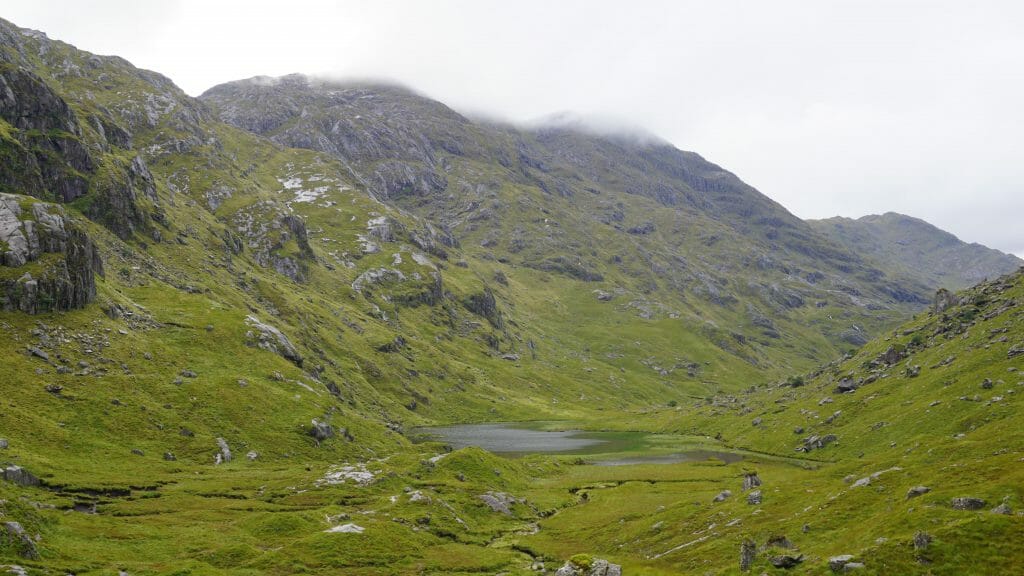
For most of the other route variations it is best to simply check with your own needs and expectations. Plot a route that works best for you. Do you need to make more supply runs? Plot a course that’ll have you visit the many small towns hugging the western coastline. Want to rough it out in solitude for a few days? Stick to the eastern route variations that will lead you through longer stretches of gloriously empty wilderness.
Or plot your own route! The beauty of a trail that has no fixed route is that you’re completely free to decide how you get to its end -as long as you get there in the end!
Which Map to Use?
Now this can be a tough one. Since the Cape Wrath Trail is somewhat of a lengthy trail, bringing all the maps that cover the CWT’s route can result in quite a pile of paper. You could print out your own maps, or have them custom made at Britain’s Ordnance Survey.
Another option that is easier and cheaper is to buy the special Cape Wrath Trail maps made by Harvey Maps. These are the maps that I used, and I would recommend them to everyone walking the trail! Not only are there only two of them, they are durable and waterproof as well! The people at Harvey Maps were able to cram more than 330 kilometres (200 miles) of route onto only two maps by cutting away every bit of map that wasn’t absolutely necessary to portray the Cape Wrath Trail. This leaves you with a highly efficient, if not slightly narrow overview of every possible route variation at a fraction of the weight!
The Cost

A chapter about costs cannot be omitted from a Dutchman’s Cape Wrath Trail guide, of course. As expenditure is something that varies strongly from one person to the next, I’ll say only this: in the end, you decide how much you want to spend. I can only show you a rough estimate of the costs you can expect to make.
Let’s get right to the point here: I spent around £500 on the entire trip, from supplies and transportation (excluding my plane ticket) to the occasional campsite or hostel. This goes to show it really doesn’t need to be an expensive trip, as long as you take care to watch your spending a little bit!
Getting There
Your first order of business will be getting to Fort William to start your adventure. Train tickets from Edinburgh or Glasgow to Fort William vary between £20 and £30 for a one-way trip.
For those of you planning on starting the trail at Cape Wrath, I recommend you take a train to Inverness (around £45 from Edinburgh) and book a bus to Durness from there. I can highly recommend the local Durness Bus service. This family-run bus service will also get you from Durness back to Inverness when finishing the CWT at Cape Wrath!
Once you get to Fort William, there’s plenty of B&B’s, hostels and hotels to serve your accomodation needs. There’s also a campsite two kilometres further up Glen Nevis, which will serve as a cheaper option to spend the night. You might even want to spend an extra day or two in this area to climb Ben Nevis, Britain’s highest mountain!
When you’re ready to start the Cape Wrath Trail, the local ferry will carry you across Loch Eil to the Gaul/Camusnagaul pier for £1,50.
Food and Supplies
Again, the amount you’d wish to spend on food and supplies will strongly vary from one person to the next. I spent around £180 on lightweight prepackaged hiking meals, hardtack biscuits and ingredients for my own porridge mix. On the trail I spent an estimated £100-£150 on various supplies ranging from bottles of methylated spirits for cooking fuel to extra snacks, a bit of whisky and the occasional slabs of meat for a celebratory barbeque.
Insurance
No matter how low-budget your travel plans may be, I will always recommend you get proper travel insurance. Especially when out on a trip like the CWT it is very important you make sure your travel insurance covers ‘off-road’ activities, as most agencies won’t cover this in their basic plans. As a rule, World Nomads offers excellent world-wide insurance for a wide range of activities, including hiking up to 6000 metres.
Always make sure to thoroughly check your insurance plan, as conditions may vary for your nationality or itinerary.
That about wraps up this practical guide to the Cape Wrath Trail. I hope I helped give you a good start in planning your own trip. As always, I’m always available for any questions you might still have! Just let me know in the comments below.

